William Andrew
Universal Bovine Identification via Depth Data and Deep Metric Learning
Mar 29, 2024
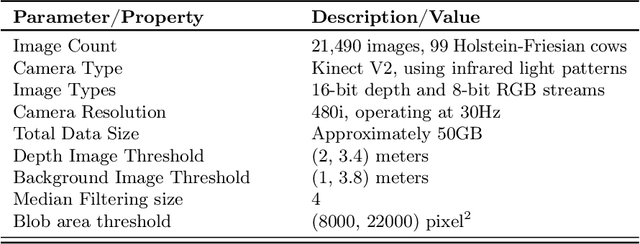
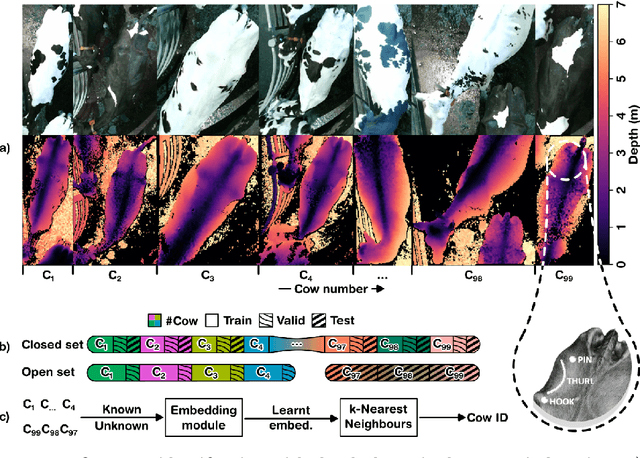
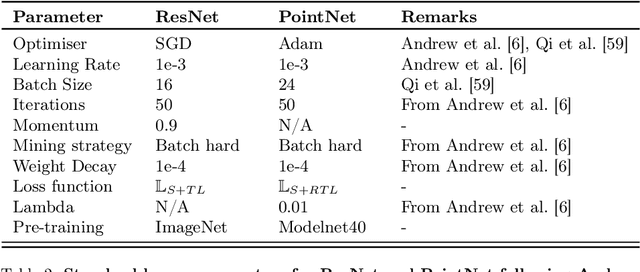
Abstract:This paper proposes and evaluates, for the first time, a top-down (dorsal view), depth-only deep learning system for accurately identifying individual cattle and provides associated code, datasets, and training weights for immediate reproducibility. An increase in herd size skews the cow-to-human ratio at the farm and makes the manual monitoring of individuals more challenging. Therefore, real-time cattle identification is essential for the farms and a crucial step towards precision livestock farming. Underpinned by our previous work, this paper introduces a deep-metric learning method for cattle identification using depth data from an off-the-shelf 3D camera. The method relies on CNN and MLP backbones that learn well-generalised embedding spaces from the body shape to differentiate individuals -- requiring neither species-specific coat patterns nor close-up muzzle prints for operation. The network embeddings are clustered using a simple algorithm such as $k$-NN for highly accurate identification, thus eliminating the need to retrain the network for enrolling new individuals. We evaluate two backbone architectures, ResNet, as previously used to identify Holstein Friesians using RGB images, and PointNet, which is specialised to operate on 3D point clouds. We also present CowDepth2023, a new dataset containing 21,490 synchronised colour-depth image pairs of 99 cows, to evaluate the backbones. Both ResNet and PointNet architectures, which consume depth maps and point clouds, respectively, led to high accuracy that is on par with the coat pattern-based backbone.
Towards Self-Supervision for Video Identification of Individual Holstein-Friesian Cattle: The Cows2021 Dataset
May 05, 2021



Abstract:In this paper we publish the largest identity-annotated Holstein-Friesian cattle dataset Cows2021 and a first self-supervision framework for video identification of individual animals. The dataset contains 10,402 RGB images with labels for localisation and identity as well as 301 videos from the same herd. The data shows top-down in-barn imagery, which captures the breed's individually distinctive black and white coat pattern. Motivated by the labelling burden involved in constructing visual cattle identification systems, we propose exploiting the temporal coat pattern appearance across videos as a self-supervision signal for animal identity learning. Using an individual-agnostic cattle detector that yields oriented bounding-boxes, rotation-normalised tracklets of individuals are formed via tracking-by-detection and enriched via augmentations. This produces a `positive' sample set per tracklet, which is paired against a `negative' set sampled from random cattle of other videos. Frame-triplet contrastive learning is then employed to construct a metric latent space. The fitting of a Gaussian Mixture Model to this space yields a cattle identity classifier. Results show an accuracy of Top-1 57.0% and Top-4: 76.9% and an Adjusted Rand Index: 0.53 compared to the ground truth. Whilst supervised training surpasses this benchmark by a large margin, we conclude that self-supervision can nevertheless play a highly effective role in speeding up labelling efforts when initially constructing supervision information. We provide all data and full source code alongside an analysis and evaluation of the system.
Visual Identification of Individual Holstein-Friesian Cattle via Deep Metric Learning
Jul 04, 2020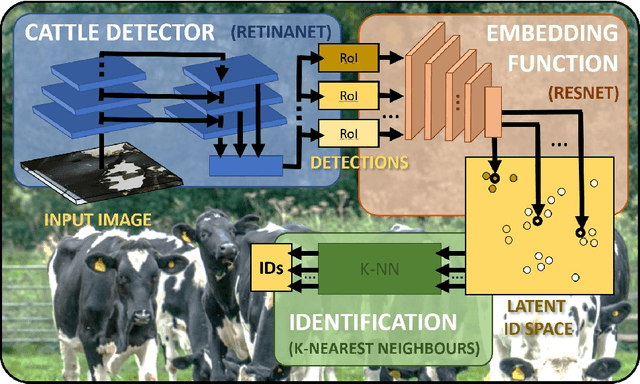

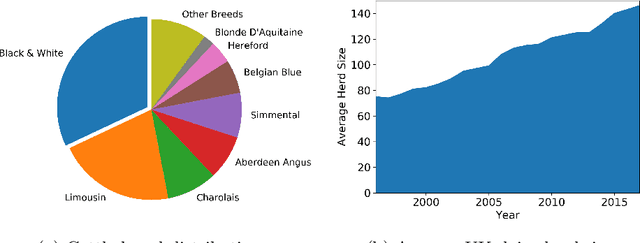

Abstract:Holstein-Friesian cattle exhibit individually-characteristic black and white coat patterns visually akin to those arising from Turing's reaction-diffusion systems. This work takes advantage of these natural markings in order to automate visual detection and biometric identification of individual Holstein-Friesians via convolutional neural networks and deep metric learning techniques. Existing approaches rely on markings, tags or wearables with a variety of maintenance requirements, whereas we present a totally hands-off method for the automated detection, localisation, and identification of individual animals from overhead imaging in an open herd setting, i.e. where new additions to the herd are identified without re-training. We propose the use of SoftMax-based reciprocal triplet loss to address the identification problem and evaluate the techniques in detail against fixed herd paradigms. We find that deep metric learning systems show strong performance even when many cattle unseen during system training are to be identified and re-identified - achieving 98.2% accuracy when trained on just half of the population. This work paves the way for facilitating the non-intrusive monitoring of cattle applicable to precision farming and surveillance for automated productivity, health and welfare monitoring, and to veterinary research such as behavioural analysis, disease outbreak tracing, and more. Key parts of the source code, network weights and underpinning datasets are available publicly.
Aerial Animal Biometrics: Individual Friesian Cattle Recovery and Visual Identification via an Autonomous UAV with Onboard Deep Inference
Jul 11, 2019



Abstract:This paper describes a computationally-enhanced M100 UAV platform with an onboard deep learning inference system for integrated computer vision and navigation able to autonomously find and visually identify by coat pattern individual Holstein Friesian cattle in freely moving herds. We propose an approach that utilises three deep convolutional neural network architectures running live onboard the aircraft; that is, a YoloV2-based species detector, a dual-stream CNN delivering exploratory agency and an InceptionV3-based biometric LRCN for individual animal identification. We evaluate the performance of each of the components offline, and also online via real-world field tests comprising 146.7 minutes of autonomous low altitude flight in a farm environment over a dispersed herd of 17 heifer dairy cows. We report error-free identification performance on this online experiment. The presented proof-of-concept system is the first of its kind and a successful step towards autonomous biometric identification of individual animals from the air in open pasture environments for tag-less AI support in farming and ecology.
 Add to Chrome
Add to Chrome Add to Firefox
Add to Firefox Add to Edge
Add to Edge